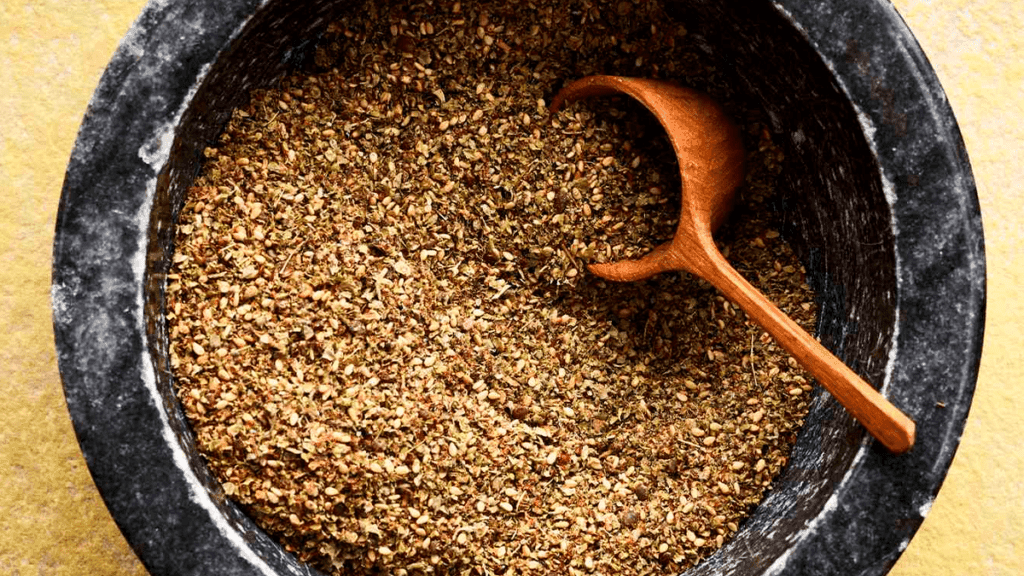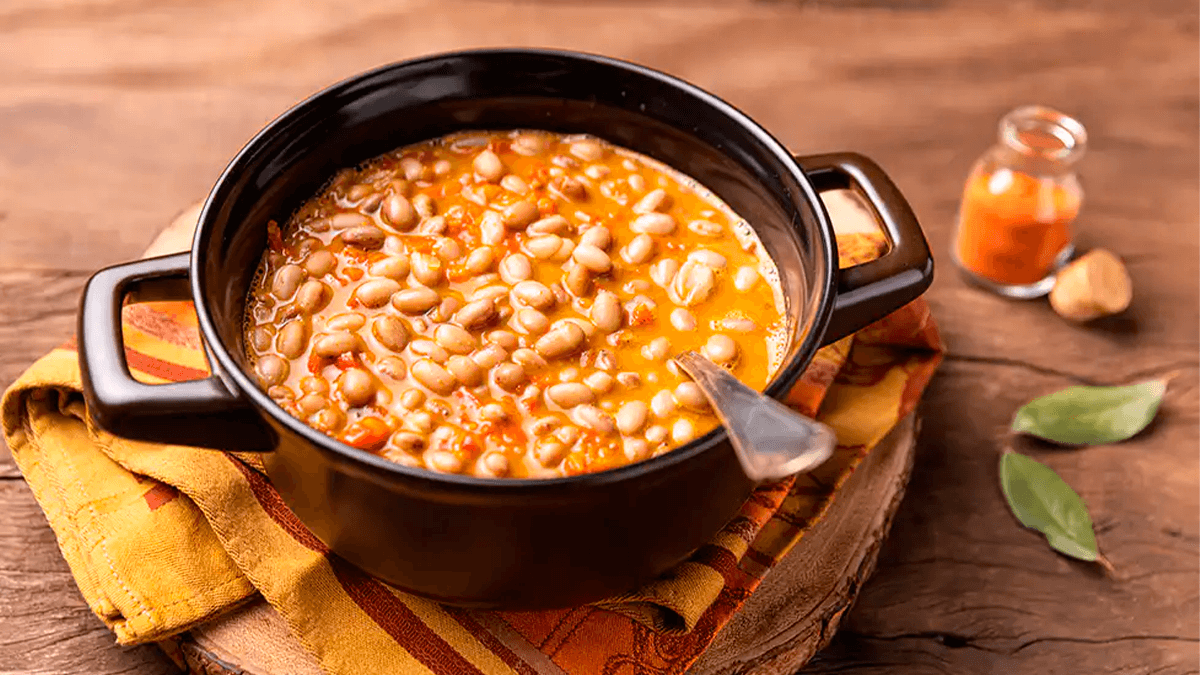How to Make Homemade Zaatar: An Aromatic and Detailed Guide

Discover the fascinating world of homemade zaatar, a culinary treasure from the Middle East that goes beyond the simple definition of a seasoning. In this comprehensive guide, you will be led through every step to create your own homemade zaatar, an aromatic and vibrant blend that will elevate your dishes to a new level of flavor. Get ready to awaken your senses with this authentic and versatile recipe, perfect for transforming your everyday meals into memorable gastronomic experiences.

Unveiling Zaatar: More Than a Seasoning, A Story
O zaatar, or za’atar, is much more than a simple spice mix; it is a rich cultural heritage, deeply rooted in Middle Eastern culinary traditions. The word “zaatar” evokes a complexity that is manifested both in the wild thyme plant native to the region and in the renowned spice blend that bears its name.
Originally, zaatar it referred to a specific type of wild thyme (Origanum syriacum), found in the mountains and valleys of the Levant. This plant, with its small and intensely aromatic leaves, carries a scent reminiscent of marjoram, oregano, and common thyme itself. However, over time, “zaatar” also came to denote the famous spice blend where this special thyme is the star, or, in its absence, common thyme is skillfully used.
The magic of homemade zaatar lies in the harmony of its components: thyme, toasted sesame seeds, sumac, coriander seeds and cumin, salt, and sometimes a touch of pepper. Each ingredient plays a crucial role, contributing to zaatar’s unique and multifaceted flavor profile. Thyme brings earthy and herbal notes, sesame adds toasted and nutty nuances, sumac offers a vibrant citrus touch, while coriander and cumin add depth and warmth. Pepper, when present, lifts the blend with a subtle spicy hint.
The Secrets of an Authentic and Aromatic Homemade Zaatar
Preparing homemade zaatar is an act of cultural rescue, a way to bring the essence of Middle Eastern flavors into your kitchen. Although there are many recipe variations, some ingredients are considered pillars to achieve an homemade zaatar authentic and unforgettable:
Essential Ingredients for Your Homemade Zaatar:
- Thyme (dried or fresh): 2 tablespoons of leaves (if fresh, use branches and dry the leaves). The heart of zaatar, thyme provides the herbaceous and aromatic base of the blend. If possible, use wild thyme for a more authentic Levant zaatar experience. If using common thyme, seek high-quality varieties with intense aroma.
- Sumac powder: 2 tablespoons. This unique ingredient gives zaatar its characteristic citrusy touch and beautiful reddish hue. Sumac, derived from dried and ground fruits of a Middle Eastern shrub, is irreplaceable for achieving authentic zaatar flavor.
- Toasted sesame seeds: 2 tablespoons. Toasted sesame seeds add a toasted, crunchy dimension and a slightly buttery flavor to zaatar. Toasting is crucial to enhance sesame flavor and avoid a bitter taste.
- Ground cumin: 1 tablespoon. Cumin contributes warm, earthy, and slightly bitter notes, adding depth and complexity to zaatar. For a fresher and more intense flavor, use cumin seeds and lightly toast them before grinding.
- Ground coriander: 1 tablespoon. Coriander, with its citrusy and floral aroma, complements cumin, bringing balance and freshness to the blend. Like cumin, freshly toasted and ground coriander seeds intensify zaatar’s flavor.
- Salt: 2 ½ teaspoons. Salt enhances and balances all zaatar flavors. Use sea salt or fleur de sel for a more refined touch.
- Crushed dried red pepper (optional): 1 teaspoon (can be crushed red chili flakes or coarsely ground black pepper). A subtle spicy touch can elevate zaatar’s complexity, providing mild heat that harmonizes with other flavors. Adjust the amount of pepper according to your preference.
Essential Utensils:
- Mortar and Pestle (optional but recommended): For traditional preparation and zaatar with a rustic, aromatic texture. The mortar allows control over grinding the ingredients, preserving essential oils and resulting in a more intense flavor.
- Mini food processor (optional): An alternative for those seeking convenience, but requires attention to not over-process the ingredients into a fine powder. Use the pulse function and process in short intervals.
- Spice grinder or coffee grinder (optional): If you choose to use cumin and coriander seeds instead of ground versions, a spice grinder or a coffee grinder dedicated to spices will be useful for grinding them fresh.
- Small bowl: To mix the ingredients and prepare the zaatar.
- Glass jars with airtight lids: To store homemade zaatar and preserve its aroma and freshness longer.
Step-by-Step Guide: Creating Your Perfect Homemade Zaatar
Preparing homemade zaatar is a simple and rewarding process. Follow this step-by-step guide to create your own aromatic blend:
1. Preparation of Ingredients:
- Thyme: If using fresh thyme, wash the branches well and dry completely. Strip the leaves and dry them in a low oven (about 50°C) for a few hours, or let dry naturally in a dry and airy place for several days. Dried thyme can be used directly.
- Sesame: Toasting sesame is crucial to enhance its flavor. Heat a skillet over medium-low heat and add the sesame seeds. Toast, stirring constantly, until lightly golden and aromatic (about 3-5 minutes). Remove from heat and let cool completely.
- Cumin and coriander seeds (optional): If you choose to use seeds instead of ground spices, lightly toast them in a dry skillet over medium-low heat for 1-2 minutes just to awaken their aromas. Let cool and then grind them in a spice grinder or coffee grinder until coarse powder is obtained.
2. Grinding and Mixing (Traditional Method with Mortar and Pestle):
- Initial grinding of thyme: Add dried thyme leaves to the mortar. Pound gently, applying firm pressure and circular motions, until leaves break and release their intense aromas. It’s not necessary to grind thyme into a fine powder; the goal is to break the leaves and release essential oils.
- Addition and grinding of seeds (optional): If using cumin and coriander seeds, add them to the mortar along with the ground thyme. Continue pounding, incorporating the seeds and grinding them coarsely.
- Incorporation of remaining ingredients: Add sumac powder, toasted sesame, ground cumin (or ground seeds), ground coriander (or ground seeds), salt, and crushed dried red pepper (if using) to the mortar.
- Final mixing and light grinding: Mix all ingredients well in the mortar, using the pestle to press and combine flavors. Pound gently for another minute just to ensure ingredients are well blended and aromas entwined. Homemade zaatar should have a rustic texture with visible bits of thyme and sesame.
3. Preparation with Mini Food Processor (Practical Method):
- Adding all ingredients: Place all ingredients (dried thyme, sumac powder, toasted sesame, ground cumin, ground coriander, salt, and crushed dried red pepper if used) in the mini processor.
- Processing with short pulses: Use the pulse function and process in very short bursts of a few seconds. The goal is to mix and coarsely break ingredients, preserving zaatar’s rustic texture. Stop processing once the blend is homogeneous with visible bits, avoiding turning it into fine powder.
4. Storage and Preservation:
- Transfer to glass jars: Transfer the homemade zaatar to clean, dry glass jars with airtight lids.
- Store in a cool, dark place: Keep zaatar jars in a cool, dry, dark place, away from direct sunlight and heat sources. When stored properly, homemade zaatar retains its aroma and flavor for up to 1 month. After this period, it can still be used, but its aromatic profile will gradually diminish.
Tips and Variations for Your Personalized Homemade Zaatar
The beauty of homemade zaatar lies in its adaptability and customization potential. Try these tips and variations to create a zaatar that reflects your palate:
Essential Tips:
- Ingredient quality: Use fresh, high-quality ingredients for superior homemade zaatar flavor. Freshly ground spices and high-quality thyme make all the difference.
- Toasting the sesame: Don’t skip the sesame toasting step! Toasting enhances flavor, adds complexity, and prevents zaatar bitterness.
- Zaatar texture: Authentic zaatar has a rustic texture with visible ingredient pieces. Avoid over-grinding, whether with mortar or food processor, to preserve this characteristic.
- Experiment with proportions: Adjust ingredient quantities according to your tastes. For a more citrusy zaatar, add more sumac. For a spicier one, increase the amount of pepper.
- Prepare small batches: Fresh homemade zaatar is more aromatic. Prepare small batches to consume within 1 month and enjoy the best flavor possible.
Creative Variations:
- Spicy zaatar: Add a larger amount of crushed dried red pepper, cayenne powder, or red chili flakes for a spicier zaatar.
- Extra citrusy zaatar: For an even more vibrant and citrusy zaatar, add lemon zest or orange zest to the blend.
- Intense herbal zaatar: Increase the amount of thyme and add other dried herbs, such as oregano, marjoram, or hyssop, for a zaatar with a more pronounced herbal profile.
- Smoked zaatar: Add smoked paprika or chipotle powder for a smoky touch and a more complex flavor.
- Sweet zaatar (sweet dukkah): For a sweet version inspired by Egyptian dukkah, replace salt with coconut sugar or brown sugar, and add spices like cinnamon, clove, cardamom, and chopped nuts. Ideal for sprinkling over fruits, yogurt, or desserts.
How to Use Your Homemade Zaatar in Cooking
O homemade zaatar is a versatile and multifaceted seasoning that can transform a variety of dishes. Explore the numerous ways to use zaatar in your kitchen:
Usage Ways:
- Breads and doughs: Sprinkle zaatar over pita bread, Syrian bread, esfihas, manakish (Lebanese pizza), focaccias, and other breads before baking. Mix zaatar into bread and pizza dough for an aromatic flavor.
- Appetizers and dips: Mix zaatar with extra virgin olive oil and serve with fresh pita bread, raw vegetables, or toast as a simple and delicious appetizer. Sprinkle zaatar over hummus, baba ghanoush, labneh, and other Middle Eastern dips.
- Meats, poultry, and fish: Season meats, chicken, and fish with zaatar before grilling, baking, or frying. Zaatar enhances the flavor and forms a tasty and aromatic crust.
- Vegetables: Sprinkle zaatar over roasted vegetables (potatoes, zucchini, eggplants, cauliflower, etc.), grilled vegetables, or sautéed vegetables to add flavor and aroma. Try zaatar in scrambled eggs, omelets, or boiled potatoes.
- Salads: Add zaatar to green salads, tomato salads, cucumber salads, or fattoush for an aromatic and flavorful touch.
- Yogurt and cheeses: Sprinkle zaatar over natural yogurt or labneh for a quick and tasty snack. Use zaatar to season fresh cheeses like halloumi or feta cheese.
- Popcorn: Try sprinkling zaatar over hot popcorn for an original and aromatic snack.
Conclusion: The Joy of Creating and Tasting Your Homemade Zaatar
Making homemade zaatar is more than just mixing ingredients; it’s a sensory journey that connects you with the rich culture and culinary tradition of the Middle East. By preparing your own zaatar, you not only ensure a fresh and aromatic seasoning but also open a world of gastronomic possibilities. Explore the versatility of zaatar, try it in various recipes, and discover the pleasure of creating and savoring an authentic seasoning made with your own hands.
Prepare your homemade zaatar and transform your meals into an explosion of flavors! Enjoy your meal!
Image Source: foodandwine







